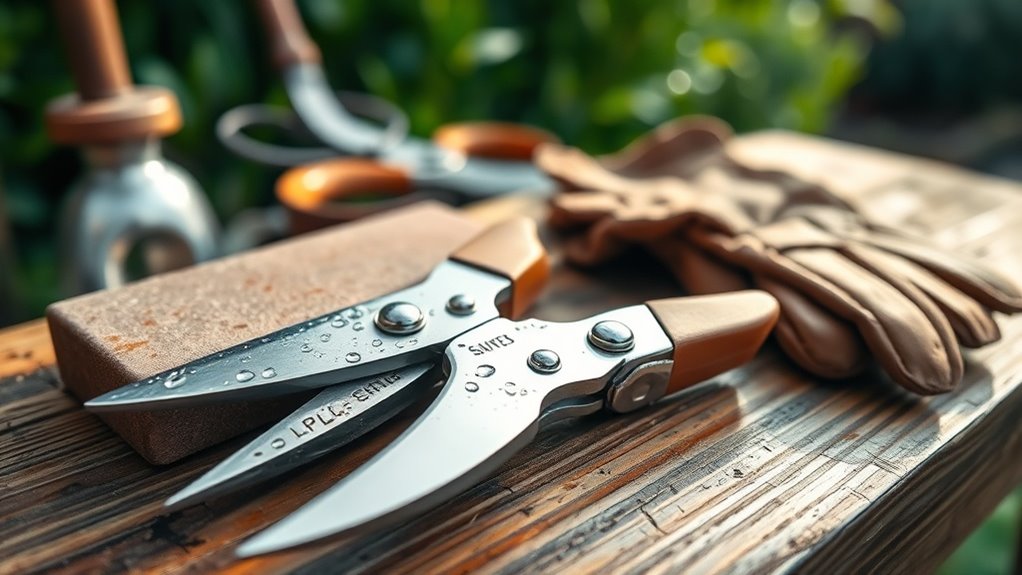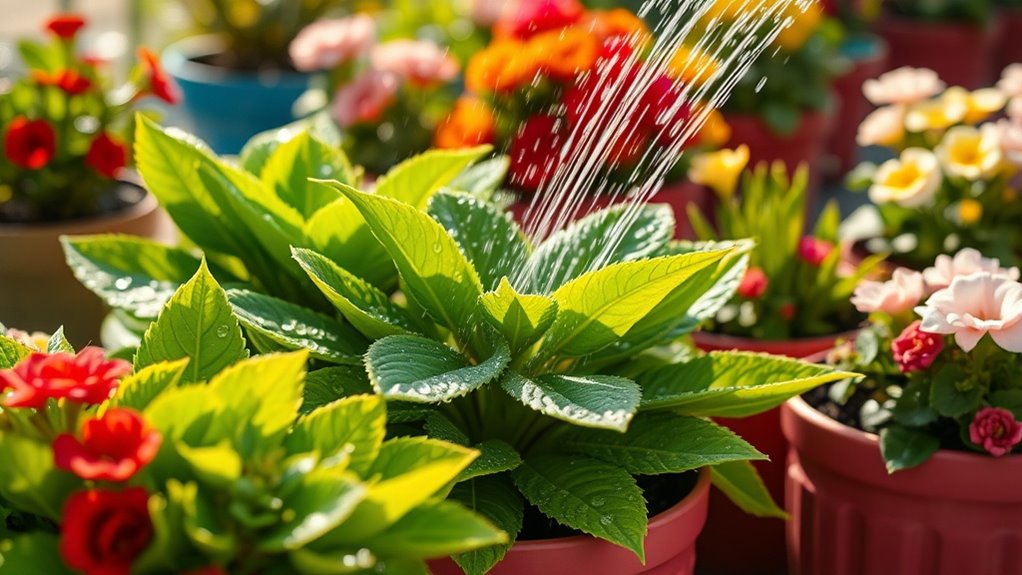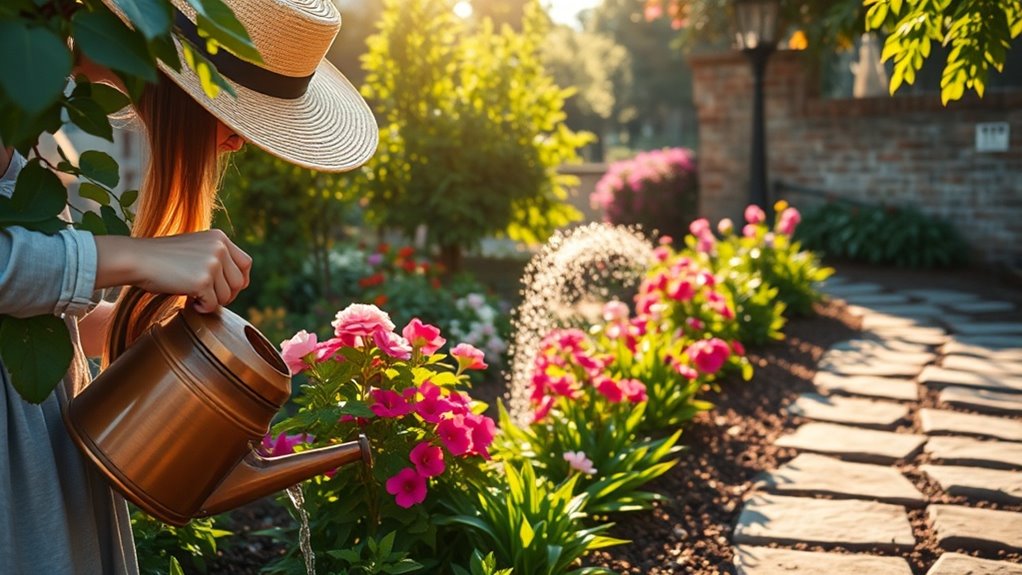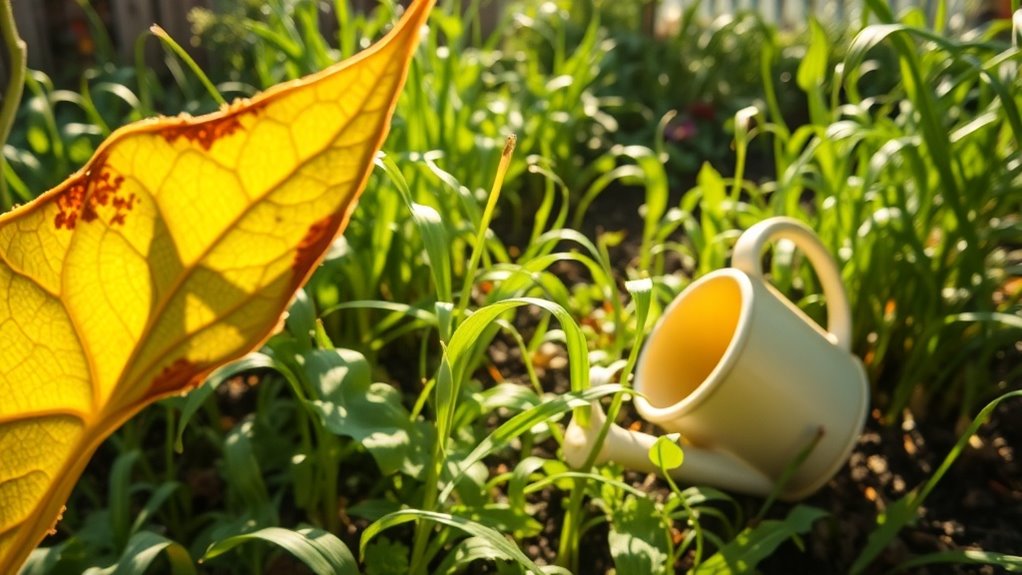Use This 10-Minute Routine to Keep Your Garden in Shape
You might think maintaining your garden takes hours, but it doesn’t have to. With just a 10-minute routine, you can keep your plants healthy and thriving. Start by gathering essential tools and assessing your garden’s condition. Then, you can tackle weeding, watering, and pruning efficiently. Understanding these quick techniques will help you make the most of your time while ensuring your garden stays in great shape. Let’s explore the essential steps you can take.
Key Takeaways
- Start by assessing plant health and soil moisture to identify areas needing attention or improvement.
- Dedicate a few minutes to quick weeding, removing stubborn weeds and their roots after rain.
- Water your garden deeply if the top inch of soil is dry, aiming for about an inch of water weekly.
- Prune dead flowers and overgrown branches to promote new growth and enhance sunlight exposure for plants.
- Use a hand rake to tidy up debris and define borders, ensuring a neat and healthy garden appearance.
Gather Your Tools
To kick off your garden care routine, you’ll need to gather essential tools that will make your tasks easier and more efficient.
Start with a sturdy trowel for digging and transplanting. A pruner’s vital for shaping plants and removing dead growth. Don’t forget a hand rake for loosening soil and removing debris. A watering can or hose with a spray nozzle is crucial for hydration, especially during dry spells. Lastly, keep gloves handy to protect your hands.
In addition, using essential garden tools can significantly simplify your gardening tasks and enhance your overall gardening experience.
With these tools, you’ll streamline your quick garden routine, allowing you to maintain a thriving garden with minimal effort and maximum results.
Assess the Garden
After gathering your tools, it’s time to assess your garden’s current state.
Begin by observing plant health; look for signs of disease or pests.
Check soil moisture levels—ensure it’s neither too dry nor waterlogged.
Evaluate the growth patterns of your plants; are they thriving or struggling?
Take note of any areas needing improvement or adjustment in sunlight exposure.
Inspect pathways for obstructions and ensure borders are well-defined.
Lastly, identify any invasive species that may require future management.
This assessment will guide your maintenance decisions and help keep your garden thriving throughout the growing season. Incorporating a simple routine into your maintenance schedule can enhance productivity and health in your garden.
Quick Weeding Techniques
To keep your garden thriving, effective weeding is essential. You can employ hand weeding strategies for targeted removal of unwanted plants and use mulching to prevent weeds from taking root in the first place. Additionally, incorporating natural methods can enhance your weeding routine and promote a healthier garden ecosystem.
Hand Weeding Strategies
Hand weeding is an essential practice for maintaining a healthy garden, and employing effective strategies can make the process quicker and more efficient.
Start by weeding after a rain, as moist soil makes it easier to pull out roots.
Use a hand trowel to dig up stubborn weeds, ensuring you remove the entire root.
Focus on smaller areas to avoid feeling overwhelmed, and always wear gardening gloves for protection.
Regularly inspect your garden, dedicating a few minutes daily to remove emerging weeds.
This proactive approach will help you maintain control and reduce the overall effort needed for weeding.
Mulching for Prevention
Mulching serves as a powerful ally in your garden care routine, significantly reducing weed growth while enhancing soil health.
By applying a layer of organic mulch—like straw, wood chips, or shredded leaves—around your plants, you create a barrier that blocks sunlight, preventing weed seeds from germinating. Aim for a thickness of 2-4 inches for optimal effectiveness.
Additionally, mulch retains moisture, regulates soil temperature, and adds nutrients as it decomposes. Regularly check your mulch level and replenish it as needed.
This simple technique can save you time on weeding while promoting a healthier, more vibrant garden.
Watering Essentials
Watering is a critical component of garden care that directly influences plant health and growth.
To ensure your plants thrive, water them deeply and infrequently, encouraging deep root development.
Aim for about an inch of water per week, adjusting for rainfall.
Early morning is the best time to water, reducing evaporation and fungal diseases.
Use soaker hoses or drip irrigation systems for efficiency.
Always check soil moisture before watering; if the top inch is dry, it’s time to hydrate.
Avoid wetting foliage to minimize disease risks.
Establishing a consistent watering schedule will keep your garden robust and flourishing. Additionally, understanding factors that influence frequency can help tailor your watering routine to specific plant needs.
Pruning and Deadheading
Pruning and deadheading are essential practices that promote healthy growth and enhance the aesthetic appeal of your garden.
Regularly remove dead or faded flowers through deadheading to encourage new blooms and prevent plants from exhausting energy on seed production.
For pruning, focus on cutting back overgrown branches, removing diseased or damaged sections, and shaping your plants for optimal sunlight exposure.
Use sharp, clean tools to ensure clean cuts and minimize stress on the plants. Quickly cleaning and sharpening tools is vital to maintain their effectiveness and prolong their lifespan.
Aim to prune during the appropriate season for each species, typically in early spring or late fall, to maximize growth and flowering potential throughout the growing season.
Final Touches and Cleanup
As you complete your garden care routine, focus on pruning and tidying up to maintain plant health and aesthetics.
Implement effective debris removal strategies to clear dead leaves and branches, ensuring a clean environment for your plants to thrive. These final touches not only enhance the garden’s appearance but also promote better airflow and reduce pest issues. Additionally, consider using natural methods to eliminate garden weeds, which can help create a healthier ecosystem for your plants.
Pruning and Tidying Up
Completing your garden care routine involves essential pruning and tidying up to ensure healthy plant growth and a neat appearance.
Start by removing any dead or damaged branches, as this encourages new growth and improves airflow.
Trim back overgrown plants to maintain their shape and promote flowering.
Use sharp, clean tools to prevent injury and disease spread.
Tidy up by cutting away spent blooms and collecting any stray leaves or stems.
This not only enhances your garden’s aesthetics but also minimizes pests and disease risks.
Regular pruning and tidying will keep your plants thriving and your garden looking its best.
Debris Removal Strategies
Effective debris removal is crucial for maintaining a clean and healthy garden environment.
Start by gathering tools like a rake, broom, and dustpan.
Focus on clearing fallen leaves, twigs, and any refuse that can harbor pests or diseases.
Use a tarp to collect larger debris, making transport easier.
For smaller items, a handheld vacuum or blower can save time.
Regularly check under plants and around garden structures; debris can accumulate unnoticed.
Dispose of waste responsibly—compost organic matter and recycle other materials.
Implementing these strategies not only enhances your garden’s appearance but also promotes plant health and growth.





